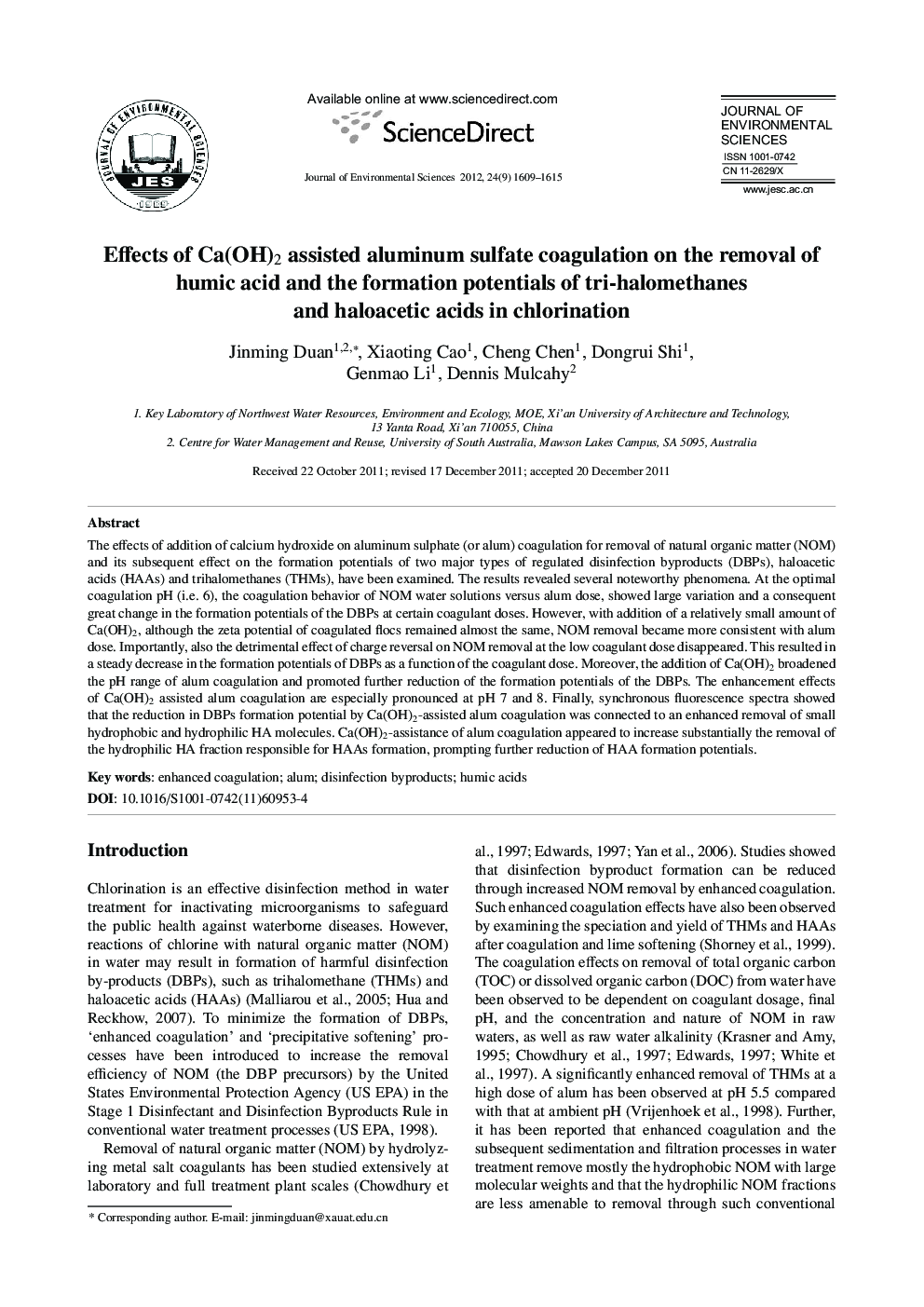| کد مقاله | کد نشریه | سال انتشار | مقاله انگلیسی | نسخه تمام متن |
|---|---|---|---|---|
| 4454418 | 1312480 | 2012 | 7 صفحه PDF | دانلود رایگان |

The effects of addition of calcium hydroxide on aluminum sulphate (or alum) coagulation for removal of natural organic matter (NOM) and its subsequent effect on the formation potentials of two major types of regulated disinfection byproducts (DBPs), haloacetic acids (HAAs) and trihalomethanes (THMs), have been examined. The results revealed several noteworthy phenomena. At the optimal coagulation pH (i.e. 6), the coagulation behavior of NOM water solutions versus alum dose, showed large variation and a consequent great change in the formation potentials of the DBPs at certain coagulant doses. However, with addition of a relatively small amount of Ca(OH)2, although the zeta potential of coagulated flocs remained almost the same, NOM removal became more consistent with alum dose. Importantly, also the detrimental effect of charge reversal on NOM removal at the low coagulant dose disappeared. This resulted in a steady decrease in the formation potentials of DBPs as a function of the coagulant dose. Moreover, the addition of Ca(OH)2 broadened the pH range of alum coagulation and promoted further reduction of the formation potentials of the DBPs. The enhancement effects of Ca(OH)2 assisted alum coagulation are especially pronounced at pH 7 and 8. Finally, synchronous fluorescence spectra showed that the reduction in DBPs formation potential by Ca(OH)2-assisted alum coagulation was connected to an enhanced removal of small hydrophobic and hydrophilic HA molecules. Ca(OH)2-assistance of alum coagulation appeared to increase substantially the removal of the hydrophilic HA fraction responsible for HAAs formation, prompting further reduction of HAA formation potentials.
Journal: Journal of Environmental Sciences - Volume 24, Issue 9, September 2012, Pages 1609-1615